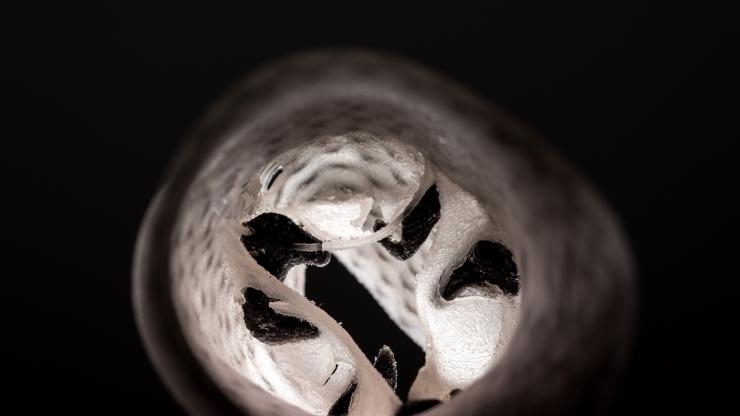If a heart beats an average of 80 times per minute, 4,800 times in an hour, it’s understandable that over time, some parts will become worn. There are four main valves within the human heart controlling the circulation of blood – two atrioventricular valves that allow blood into the heart’s lower chambers, and two semilunar valves that direct blood out of the heart to the lungs. Researchers at the Georgia Tech Manufacturing Institute have 3D printed synthetic replicas of these valves that can be used to mend the tissue that gets worn over time.
Gif shows the opening and closing of a human heart’s blood flow valves. Image by Wikimedia Commons contributor josiño
Georgia Tech’s heart valves have been developed especially for the treatment of aortic stenosis, a condition where valves on the left side of the heart become narrow and often brittle due to a build-up of calcium. This is a condition primarily seen in older patients and typically treated with open-heart surgery. However, using these synthetic valves, the surgery becomes less invasive through the use of a catheter.
No one-size fits all
Personalization comes into the treatment too. Just as shoe-size and height differ from person to person, so does the size of internal organs. CT scans of the patients heart are taken and then used to create a digital 3D model matching the size and shape.
Valve behaviour is also monitored using the scan. This can determine the unique way the tissue strains, i.e. elastic in one part, rigid in another. Georgia Tech then incorporated multiple materials into the 3D print to mimic these qualities.

Advances in the science of heart fabrication
Professor Chuck Zhang of Georgia Tech is one of the lead researchers on the project. The research compliments the heart-on-chip technology we’ve recently seen from the Weiss Institute at Harvard. Georgia Tech’s Zhang has also been experimenting with adding electronic sensors to the 3D printed valves for motion monitoring in pre-surgical planning trials.
Cardiovascular specialist Zhen Qian of the Piedmont Heart Institute in Atlanta, was another partner in the research. The general direction of the project envisions that 3D printed valves will become common practice in heart surgery and planning. Qian is hopeful of this outcome saying,
The results are quite encouraging. Our printed model is able to tell you before the procedure how much paravalvular leakage there will be and where it is, a good indicator for short- and long-term mortality.
Featured image shows the Callaway Manufacturing Research Center at Georgia Tech. Photo via: gatech.edu



